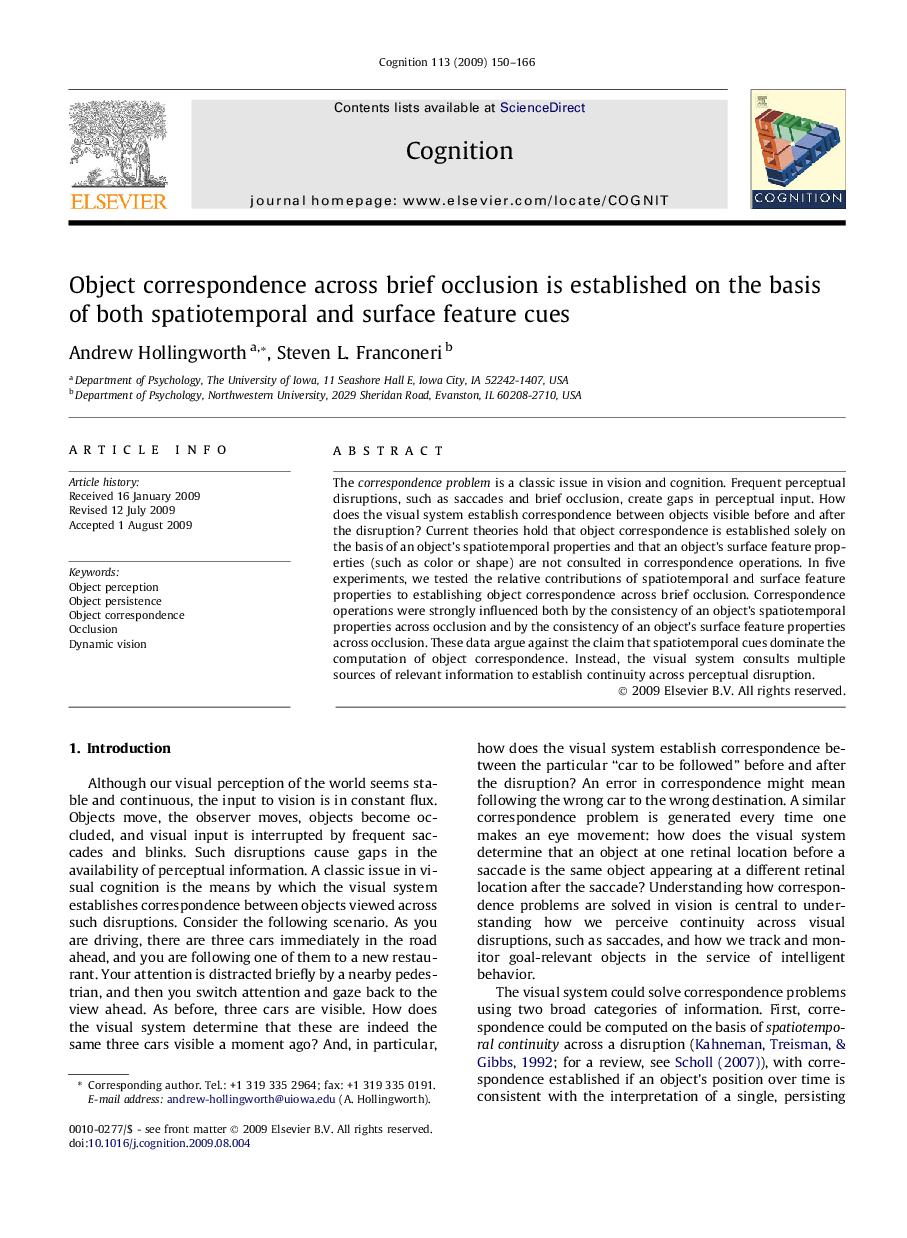| Article ID | Journal | Published Year | Pages | File Type |
|---|---|---|---|---|
| 927035 | Cognition | 2009 | 17 Pages |
The correspondence problem is a classic issue in vision and cognition. Frequent perceptual disruptions, such as saccades and brief occlusion, create gaps in perceptual input. How does the visual system establish correspondence between objects visible before and after the disruption? Current theories hold that object correspondence is established solely on the basis of an object’s spatiotemporal properties and that an object’s surface feature properties (such as color or shape) are not consulted in correspondence operations. In five experiments, we tested the relative contributions of spatiotemporal and surface feature properties to establishing object correspondence across brief occlusion. Correspondence operations were strongly influenced both by the consistency of an object’s spatiotemporal properties across occlusion and by the consistency of an object’s surface feature properties across occlusion. These data argue against the claim that spatiotemporal cues dominate the computation of object correspondence. Instead, the visual system consults multiple sources of relevant information to establish continuity across perceptual disruption.
